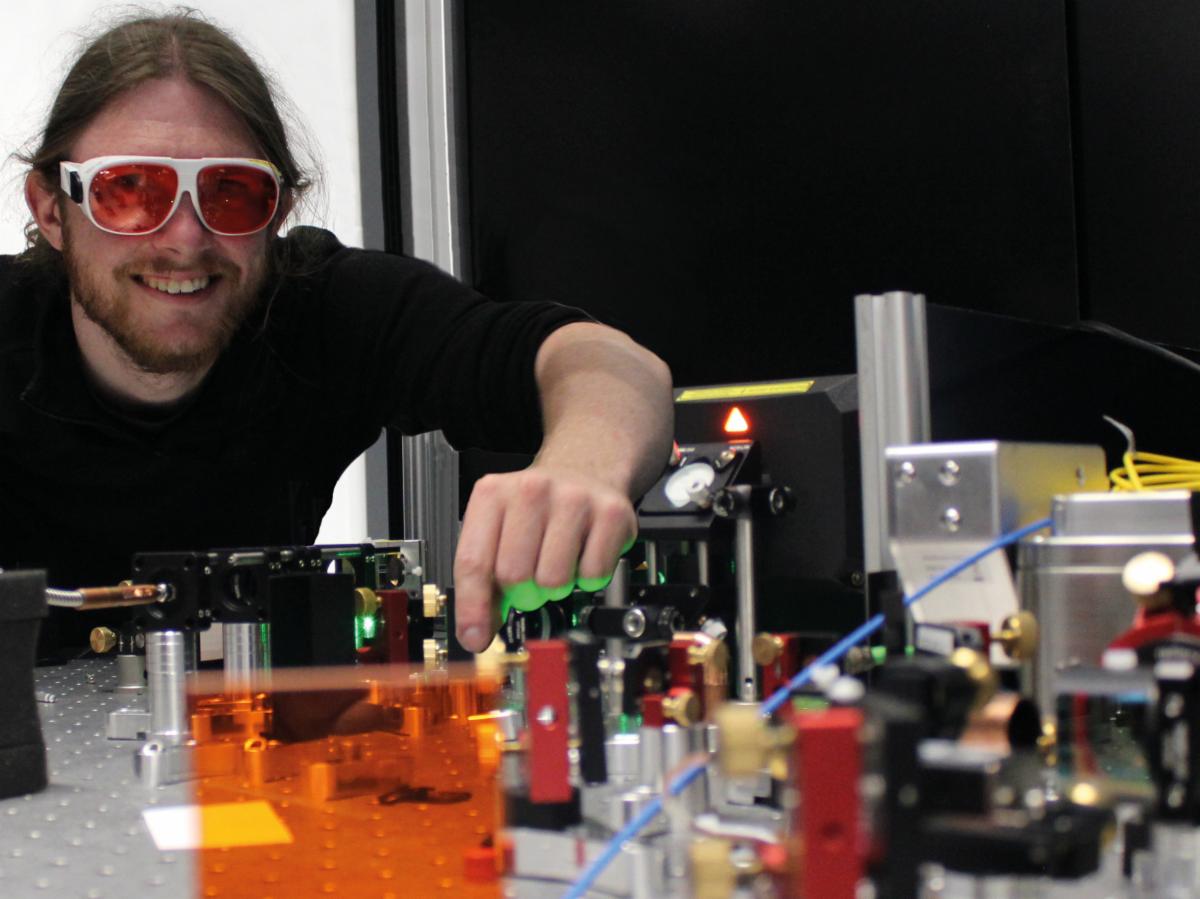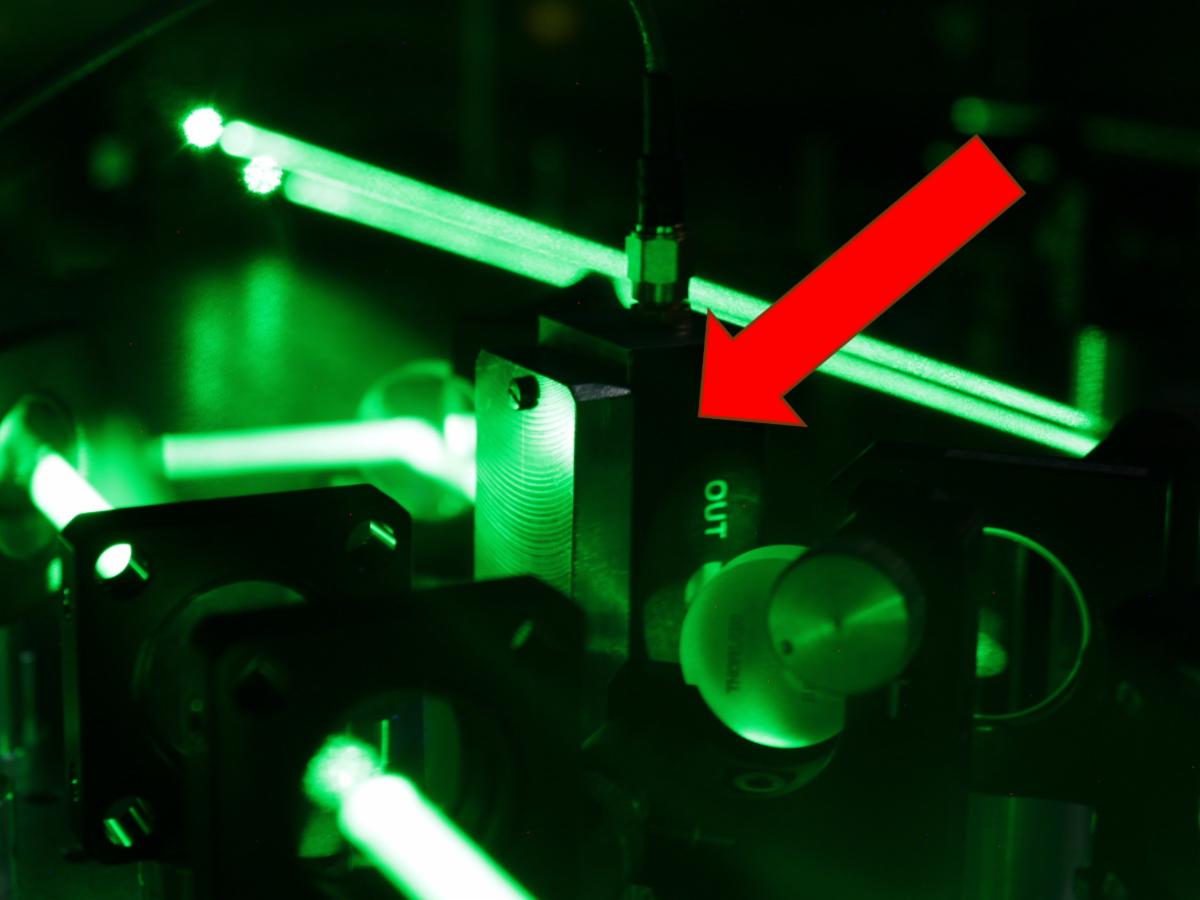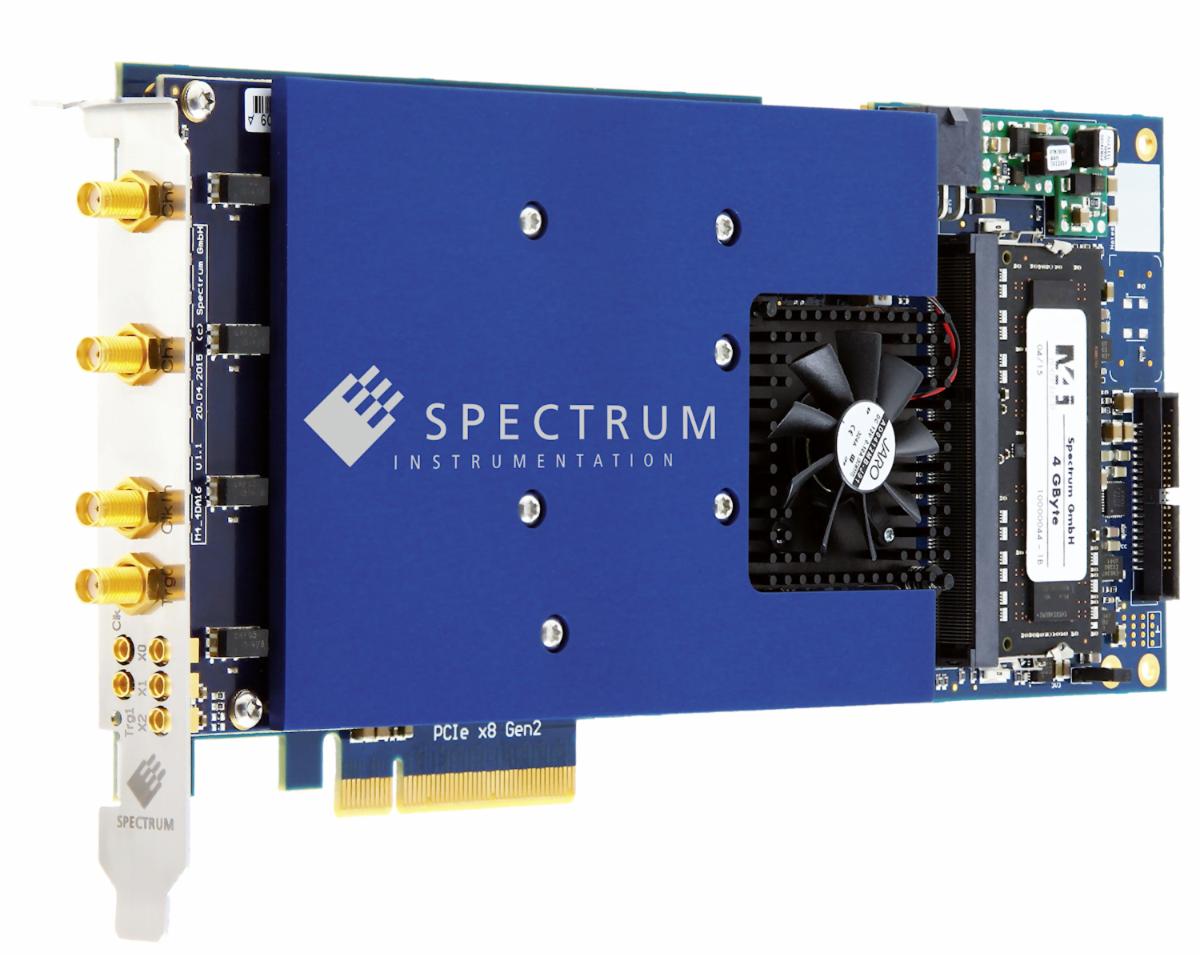Building a Quantum Computer (QC) can be done in a variety of ways, and Kaiserslautern’s RPTU technique within the Rymax One developing a variety of single atoms that function as qubits is one joint venture. It’s difficult to move and maintain each atom in its exact place. This is accomplished by focusing a laser on each atom, which acts as an optical tweezer by trapping it in the center of the laser beam.

However, at the moment, a significant quantity of data and programming are needed to program each beam movement point-by-point. With the new Direct Digital Synthesis (DDS) firmware option from Spectrum Instrumentation, this has now been drastically reduced. Instead of requiring laborious, large data array calculations to control the position of the lasers, a few straightforward commands that define the start and stop parameters can now be used to control the lasers’ position.
Graduate physicist Jonas Witzenrath at the quantum experimental setup of University Kaiserslautern, Germany
Dipl.-Phys. Jonas Witzenrath said, “This is making a huge difference to the progress of our research. Using the new DDS option, we have been able to make rapid progress and reduce the complexity in the system allowing us to focus on advancing the research. The next step is to do the reordering of atoms in a static two-dimensional array using the dynamic capabilities of the DDS-firmware.” Furthermore, in the next phase, they will use the AWGs to shape ideal UV laser pulses for precisely controlling interactions between qubits.
“DDS has become a vital tool in our project and we are finding that it can actually be used in other things in the lab as it is very flexible and can be used for other functions so we don’t have to buy dedicated equipment for them. For example, pulsed lasers, chirp generation, etc. We worked very closely with Spectrum to develop this DDS feature and are now working on expanding its possible uses in research so that it can help other laboratories.”
He continued by saying that the Spectrum AWG cards were picked because of their excellent analog performance combined with enormous memory and fast card transfers, making them the go-to option for quantum research. In particular, the latter is important since it forces a stop in the experiment until the reordering waveforms are computed and posted onto the cards. The primary factor in the Spectrum AWG cards’ widespread use in the AMO/QC community is their transfer speed, which distinguishes them from competing competitors.

Another crucial factor was the card’s operating speed. The inherent flaw of fast AWGs is excessive jitter or latencies on the scale of tens of milliseconds, which causes errors and delays in processing while the system makes corrections and recorrects.
The inherent timing of the DDS firmware produces almost jitter-free commands that Spectrum’s AWGs can output in less than twenty microseconds.
The acousto-optic deflector (AOD, red arrow) splits one laser beam into many controllable single beams which catch and hold the atoms
In one example experiment, an AOD (Acousto-Optic Deflector) that creates a tweezer to capture the atoms is driven by the Spectrum Instrumentation AWG card M4i.6631-x8. The RF signal used to drive the AOD has a frequency of about 82 MHz. With their present configuration, they use s-shaped frequency ramps to decrease heating, moving the tweezer with an atom by around 8 ?m in 100 ?s for a shift of 1 MHz. The signal’s amplitude is linearly adjusted throughout this period to account for variations in light intensity.
The DDS Firmware Option
One fixed-frequency reference clock may be used to generate arbitrary periodic sine waves using the DDS approach. This method is widely applied in many different signal generating applications. Users may now designate up to 23 DDS cores per AWG card, which can then be routed to the hardware output channels, thanks to a new feature from Spectrum Instrumentation.
It is possible to program the frequency, amplitude, phase, frequency slope, and amplitude slope of each DDS core (sine wave). A programmable timer with a precision of 6.4 ns or external trigger events can be used to synchronize the DDS output.
The AWG generates the multi-tone DDS signal while it is in DDS-mode. The device can stream DDS commands at a rate of up to 10 million commands per second thanks to its integrated 4 GByte memory and rapid DMA transfer mode! With the help of straightforward, user-friendly DDS instructions, this special function offers the freedom to execute user-defined slopes (like s-shaped) and different modulation types (like FM and AM).
Widely used by quantum researchers around the word: The M4i.6631-x8 Arbitrary Waveform Generator with 1.25 GS/s sampling speed, 16-bit resolution and 2 channels

The Rymax One QC design
In 2021, Spectrum Instrumentation and the University of Kaiserslautern joined the Rymax One collaboration and were funded by the German Federal Ministry of Education and Research’s “quantum technologies – from basic research to market” initiative. This consortium’s goal is to construct a quantum optimizer.
Optical tweezers are used to suspend individual Ytterbium atoms in a vacuum in a Rydberg state for this purpose. In particular, the Rymax cooperation works on quantum annealing and quantum QAOA algorithms for solving quantum optimization issues like the Maximum Independent Set problem.
They are now able to construct hardware that is ideal for “analog” quantum computing. Dynamic control over (UV-)laser light is a crucial component of the design, requiring complete control over the various RF signals. Herein lies the value of Spectrum Instrumentation’s extensive experience.
For Further Info: CLICK HERE




